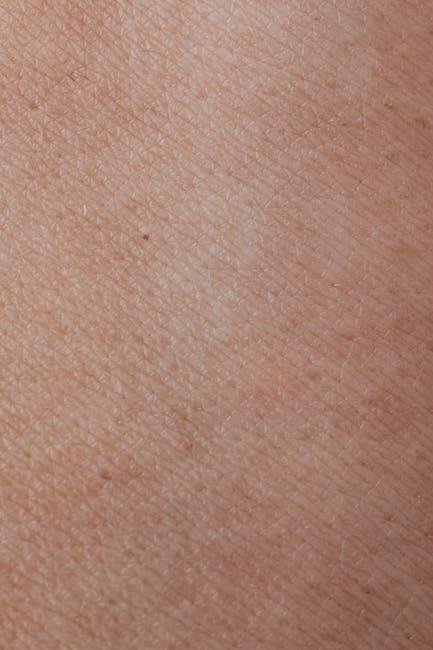In the ever-evolving world of beauty and skincare, the quest for the perfect foundation transcends mere color matching; it is an intimate journey towards enhancing one’s natural texture. For those with textured skin, the pursuit of a flawless finish can often feel like navigating a labyrinth of options, each promising perfection but rarely delivering it. In this article, we delve deep into the foundations that truly cater to the unique needs of textured skin, exploring formulations, application techniques, and expert insights that can elevate your makeup game. Whether you’re combating dryness, acne scars, or large pores, our guide will illuminate the paths to choose from, helping you find the right foundation that not only complements your complexion but also celebrates its individuality. Join us as we uncover what works and what doesn’t, paving the way for a more radiant you.
Exploring the Unique Needs of Textured Skin
Textured skin presents a distinct set of challenges when it comes to makeup application, particularly with foundation. It’s essential to prioritize products that offer not just coverage but also a smooth finish. When selecting a foundation, consider the following key attributes:
- Hydration: Opt for foundations infused with hydrating ingredients to prevent the formula from clinging to dry patches.
- Buildable coverage: Choose products that allow you to layer without looking cakey, ensuring you can customize the finish.
- Formula Type: Cream or liquid foundations often work better compared to powders, which may exacerbate texture issues.
The application technique also plays a crucial role in achieving a flawless look. A few tried-and-true methods for optimal results include:
- Use a Damp Beauty Sponge: This technique ensures a blended, airbrushed finish that doesn’t settle into imperfections.
- Stippling Brush: A stippling brush allows for gentle application, preventing heavy buildup in areas with texture.
- Prime Wisely: A smoothing primer can create a canvas that reduces the appearance of texture, providing a better surface for foundation.
To better illustrate the best foundation types for textured skin,consider the following comparison:
| Foundation Type | Pros | Cons |
|---|---|---|
| Cream | Luxurious feel,good coverage | Can be heavy if layered too much |
| Liquid | Lightweight,versatile | Can need setting powder for longevity |
| Stick | Portable,high coverage | May accentuate texture if not blended well |

Essential Ingredients to Look for in Foundation formulations
When selecting a foundation suited for textured skin, prioritizing the right ingredients can make all the difference in achieving a flawless finish. Silicone-based ingredients such as dimethicone and cyclopentasiloxane are fantastic for smoothing out skin’s surface, creating a barrier that prevents the foundation from settling into fine lines and uneven textures. They not only enhance the product’s spreadability but also improve the overall appearance of the skin, giving it a polished, airbrushed look. additionally, formulations that contain hydrating components like hyaluronic acid or glycerin can add moisture, preventing the skin from feeling dry and flaky while ensuring a comfortable wear throughout the day.
another key element to consider in foundation formulations for textured skin is the presence of light-reflecting properties. Ingredients such as mica or pearl pigments can help in blurring imperfections, thus providing a soft-focus effect that visually smooths out the skin. Opting for a foundation that includes anti-inflammatory agents like niacinamide or green tea extracts can also soothe irritation and redness, promoting an even skin tone over time. Always look for products labeled as non-comedogenic to ensure that your foundation supports, rather than detracts from, the health of your skin. below is a table summarizing thes essential ingredients and their benefits:
| Ingredient | Benefit |
|---|---|
| Silicone-based Components | Smooths surface, prevents settling |
| Hyaluronic Acid | Hydration, comfortable wear |
| Light-reflecting Ingredients | Blurs imperfections, soft-focus effect |
| Anti-inflammatory agents | Soothes skin, promotes even tone |
| Non-comedogenic Formulas | Supports skin health |

Techniques for Application that Enhance Skin Texture
Achieving a smooth surface for foundation application is crucial for enhancing the appearance of textured skin. Start by preparing the skin with a proper cleansing and moisturizing routine.Exfoliation is also key; incorporating gentle yet effective exfoliants can improve skin texture substantially by removing dead skin cells and revealing a brighter layer below. Consider using a hydrating primer that contains light-reflecting properties to blur imperfections while providing a smooth base for your foundation. Next, employ various application techniques that promote an even distribution of product:
- Stippling: Using a stippling brush can create a lightweight, airbrushed finish.
- Beauty Blender: This tool works wonders for dispersing foundation without settling into fine lines.
- Fingers: Applying with fingertips ensures the warmth from your hands melds the product seamlessly into the skin.
Additionally, consider layering your products wisely to build coverage without compromising on texture. A lightweight BB cream or a tinted moisturizer can act as a first layer to even out the skin tone before applying a more pigmented foundation.If blemishes or imperfections still peek through, opt for a waxy, heavier concealer for targeted coverage. Here’s a speedy overview of layering products:
| Product type | Purpose |
|---|---|
| BB Cream/Tinted Moisturizer | Light, breathable coverage |
| Foundation | Medium to full coverage |
| concealer | Targeted coverage for specific areas |

Choosing the Right Finish: Matte vs. Radiant for Textured Skin
When navigating the world of foundation finishes, the choice between a matte and a radiant look can significantly impact how textured skin appears. Matte finishes are generally recommended for those wanting to minimize shine and create a more polished appearance. They work wonders in absorbing excess oil and offering a smooth canvas, which can be particularly beneficial for skin that exhibits rough patches or larger pores. Though,this finish may risk enhancing texture if the skin is dry or flaky,as it can cling to uneven spots and create a more pronounced look.
On the other hand, radiant foundations can impart a luscious glow that may distract from texture, emphasizing a more youthful appearance. This finish reflects light, which can soften the appearance of texture and even out skin tone.It is indeed critically important, though, to choose the right formulation; a radiant finish should not be overly hydrating to avoid emphasizing oily areas. To help in making that choice, consider the following:
- Skin Type: Oily skin may benefit from matte, while dry skin can thrive with radiant.
- Product Texture: Lightweight formulas are frequently enough preferable for radiant finishes.
- Setting Products: Pairing with powder or spray can enhance longevity for either finish.
Final Thoughts
navigating the world of foundations for textured skin can be a rewarding journey when equipped with the right knowledge and products. from selecting the ideal formulas that promote a smooth finish to embracing application techniques that enhance natural beauty, it’s clear that the choices we make can significantly impact our makeup experience. By understanding your unique skin type and experimenting with various foundations, you can discover what truly works for you. Remember, beauty is about celebrating individuality, and with the right foundation in hand, it’s possible to create a canvas that reflects your true self. So go forth, explore, and may your complexion radiate confidence and authenticity in every layer.
